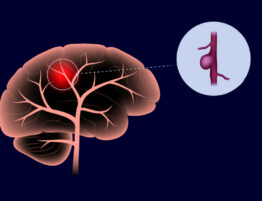In the intricate dance of our body’s inner workings, a condition breaks the rhythm. It’s a condition you may know as peripheral neuropathy. It’s like a tiny glitch in the large orchestra of our nerves. It causes an unexpected symphony of sensations.
Imagine that your nerves are messengers. They deliver messages between your brain and the farthest reaches of your body. Now imagine those messengers stumbling around, creating a jumble of signals. That’s exactly what happens with this problem. These vital messengers are failing. It leads to sensations such as tingling, numbness, and pain.
These improper signals can be like a puzzling puzzle. It leaves people suffering from this condition searching for answers. What causes this misunderstanding? What are the signs that your body’s messengers are on a confusing journey? In this study on neuropathic disease, we will break down the layers of this puzzle. We can identify its causes, symptoms, and possible solutions. So, let’s take a journey into the world of these confusing messengers. Let’s unravel the mysteries of this problem together.
Peripheral Neuropathy and Its Causes
Considering the question of what peripheral neuropathy is, it is worth saying that it is a confusing game for your nerves. It is where the rules get bent. Nerves, like tiny messengers, are supposed to relay messages from the brain to the rest of the body. However, sometimes things go wrong. Think of it like a mix-up on a messaging app. Except it’s happening in your body. Now, let’s look into the causes of this nervous chaos:
| Diabetes | One of the common culprits is diabetes. It is a disease in which high blood sugar levels play the role of a troublemaker. Like a mischievous character, it wreaks havoc on the nerve messaging system. |
| Medications | Imagine your nerves tangled in a web of side effects. It disrupts their usual smooth communication. It can lead to nerve pain. |
| Alcohol | It can cause this trouble. Excessive consumption of alcohol can damage the nerves over time. It will create a turbulent environment for these vital messengers. |
| Vitamin deficiency | It is another player in this nerve puzzle. Think of the balance of nutrients in your body on a delicate scale. If your body lacks certain vitamins, it can tip the scales toward nervous discomfort. |
| Infections | Infections, as insidious invaders, can also trigger peripheral neuropathy. The body’s defenses can sometimes take a toll on your nerves, whether it’s a virus or bacteria. |
Understanding these causes, including the interplay of neuropathy and anxiety, is like deciphering the rules of the game. It will help you navigate your way to managing and preventing peripheral neuropathy. By identifying these triggers, you can restore harmony to the tangled network of nerves. This harmony will keep your body toned.
Symptoms of Peripheral Neuropathy
Entering the realm of nerve pain in foot symptoms is like entering a diverse landscape. And here, each person’s experience is unique. Just as fingerprints differ, so is how this condition manifests itself in individuals. Think of it as a set of puzzle pieces. It is where each symptom contributes to the big picture, but it varies from person to person.
The symptoms of a given medical problem paint a canvas of individual feelings. Think of it as a palette of colors. Each shade represents a different sensation experienced by people suffering from this condition. As we explore these varied symptoms, one thing becomes apparent. Understanding their range and variations is critical to unraveling the complexity.
So, let’s take you on a journey through neuropathic disease. You will learn about the myriad ways in which this disease manifests itself. You will realize that each person’s story is a unique chapter in the larger story of neuropathic disease.
Tingling or Numbness
In the world of neuropathic pain symptoms, tingling and numbness take center stage. Imagine tiny sparks or a temporary loss of sensation, like a limb falling asleep. It’s as if your nerves are playing tricks on you, sending signals that make you feel like you’re humming or, conversely. It’s like some part of you has mysteriously gone quiet.
Burning or Sharp Pain
Imagine the sensation of the problem as a fiery dance or a sudden, stabbing jolt. Imagine a burning sensation, like standing too close to a hot stove. Or that sharp nerve pain in your foot, similar to a quick electric shock. These are pieces of the puzzle of discomfort. The nerves transmit signals of intense heat or sudden, piercing sensations. It creates vivid experiences for those who suffer.
Sensitivity to Touch
In the tapestry of symptoms, sensitivity to touch is a delicate thread. Imagine a light touch, like a gentle breeze. But it turns into discomfort as if your nerves are on high alert. It’s like hypersensitivity. Even a soft touch can become an unexpected source of sensation. It creates a unique aspect of this condition.
Muscle Weakness
Muscle weakness plays a distinct note in the symphony of neuropathic disease symptoms. Picture it like a subtle loss of strength, as if your muscles are temporarily pausing. Imagine trying to lift a familiar weight, but your muscles respond with a quiet protest. This weakness, a key player in the condition, adds a unique layer to the sensory orchestra.
Loss of Coordination
Enter a world where loss of coordination becomes a stumbling block in the intricate dance of movement. Imagine a miscommunication between your brain and your muscles. It causes a brief waltz of imbalance. It’s as if the choreographer in coordination is briefly out of sync. It causes a unique problem when moving across the physical landscape.
Balance Problems
In the realm of symptoms, balance problems are also central. It creates a shaky view of the body’s balance. Think of it as a temporary instability. It’s as if your internal balancer has become a little unpredictable. It’s a unique challenge when the signals between your brain and body are briefly disrupted. It leads to a dance of instability and nerve pain.
Changes in Reflexes
The changes in reflexes become a barely noticeable but meaningful movement. Think of it as a brief fluctuation in your body’s automatic reactions. It’s like a pause in a familiar rhythm. It’s as if the conductor of the reflexes encounters a brief interruption. It all demonstrates a unique aspect of this complex symphony of sensations.
Autonomic Dysfunction
Autonomic dysfunction is like a glitch in the body’s autopilot system. It’s an irregular heartbeat, fluctuating blood pressure, or digestive hiccups. It’s as if the automatic control systems malfunction for a moment. Such symptoms bring a unique dimension to neuropathic pain. These are the symptoms that people with this condition may encounter.
Impaired Organ Function
In the mosaic of peripheral neuropathy symptoms, organ dysfunction is a crucial element. Think of it as a disruption in the harmonious functioning of the organs. It’s like a momentary glitch in the system. It is as if the conductor controlling your internal orchestra encounters a momentary dissonance. It affects the symphony of bodily functions in a unique way.
Diagnosis of Peripheral Neuropathy
Diagnosing nerve pain involves a puzzle-solving approach, much like ulnar nerve care. Imagine you are collecting clues to unravel the mystery of your nerves. It involves a comprehensive approach by doctors:
- First, doctors start with a conversation. They ask you about your symptoms and medical history.
- Next, the doctor may perform a physical exam. They may test your reflexes and sensations.
- Often, the next step is tests. Examination of the tests helps to find signs of the underlying causes of neuropathic pain.
With these simple manipulations, the doctor puts the puzzle together. It helps him uncover the big picture of your condition. Sometimes, the doctor may order electromyography (EMG) and nerve conduction studies. These are a duo of investigators who evaluate nerve function.
Together, these parts create your diagnosis. It opens the door to understanding and managing neuropathic disease.
Focusing on a Common Symptom: Nerve Pain in Foot
Nerve pain in the foot is a widespread problem. It causes discomfort and tingling. Such a condition often manifests as a “needles and pins” sensation. It makes activities such as walking difficult. Diabetes, injuries, and taking certain medications are common culprits of this discomfort.
Treating nerve pain involves practical steps. Choose comfortable shoes, practice foot hygiene, and avoid tight socks. These are simple measures that can make a difference.
Are you experiencing similar pain? You need to see your doctor for a personalized consultation. They can recommend appropriate medications and develop a personalized plan for relief. Early detection and proper care play a key role. Do not hesitate to consult a specialist to manage this symptom effectively.
Managing Neuropathic Pain in Peripheral Neuropathy
Treatment for nerve pain involves a multifaceted approach. But it is all aimed at improving comfort and daily functioning:
- Medications. A doctor may prescribe anticonvulsant drugs or antidepressants. These can help alleviate pain signals.
- Physical therapy. This treatment can help maintain mobility and reduce discomfort.
- Lifestyle. Lifestyle adjustments also play an essential role. Proper foot care, including regular examinations and moisturizing. It helps prevent complications.
- Wearing comfortable shoes. Your shoes should have adequate support. It minimizes pressure on sensitive nerves.
- Temperature. We recommend monitoring the temperature, as fluctuations can affect nerve pain in the foot.
- Relaxation techniques. Deep breathing or meditation helps improve overall health. They can alleviate stress-related worsening of neuropathy.
By combining medical interventions with lifestyle changes, individuals can increase their ability to manage neuropathic pain and improve their overall quality of life.
Conclusion
We hope you now know what peripheral neuropathy is. With symptoms, finding relief can be a puzzle. But, thanks to the personalized treatment of Lone Star Neurology, you are no longer alone.
Our Clinic specializes in exploring your body’s neurological mysteries. We offer expert guidance and assistance in treating any neurological condition.
Our team is dedicated to developing solutions and offering customized treatment plans. With us, you can restore harmony to your body’s complex orchestra. Unlock the potential for a harmonious and pain-free journey – book a consultation today.
FAQ
What are the first signs of Peripheral Neuropathy?
The first signs include tingling, numbness, or a “pins and needles” sensation in the extremities. You may also see a gradual onset of weakness and coordination problems.
Can neuropathic pain be cured?
Neuropathic pain is often something people can’t cure, but you can manage it. Use medication, lifestyle changes, and treatment of the underlying condition. It will help relieve symptoms, but you will not get a cure.
Why is nerve pain in the foot a common symptom of Peripheral Neuropathy?
The foot is commonly affected because of long nerve pathways. Peripheral neuropathy damages these nerves, causing pain, tingling, or loss of sensation. Diabetes, injuries, and certain diseases contribute to nerve pain in the foot.













Please, leave your review
Write a comment: